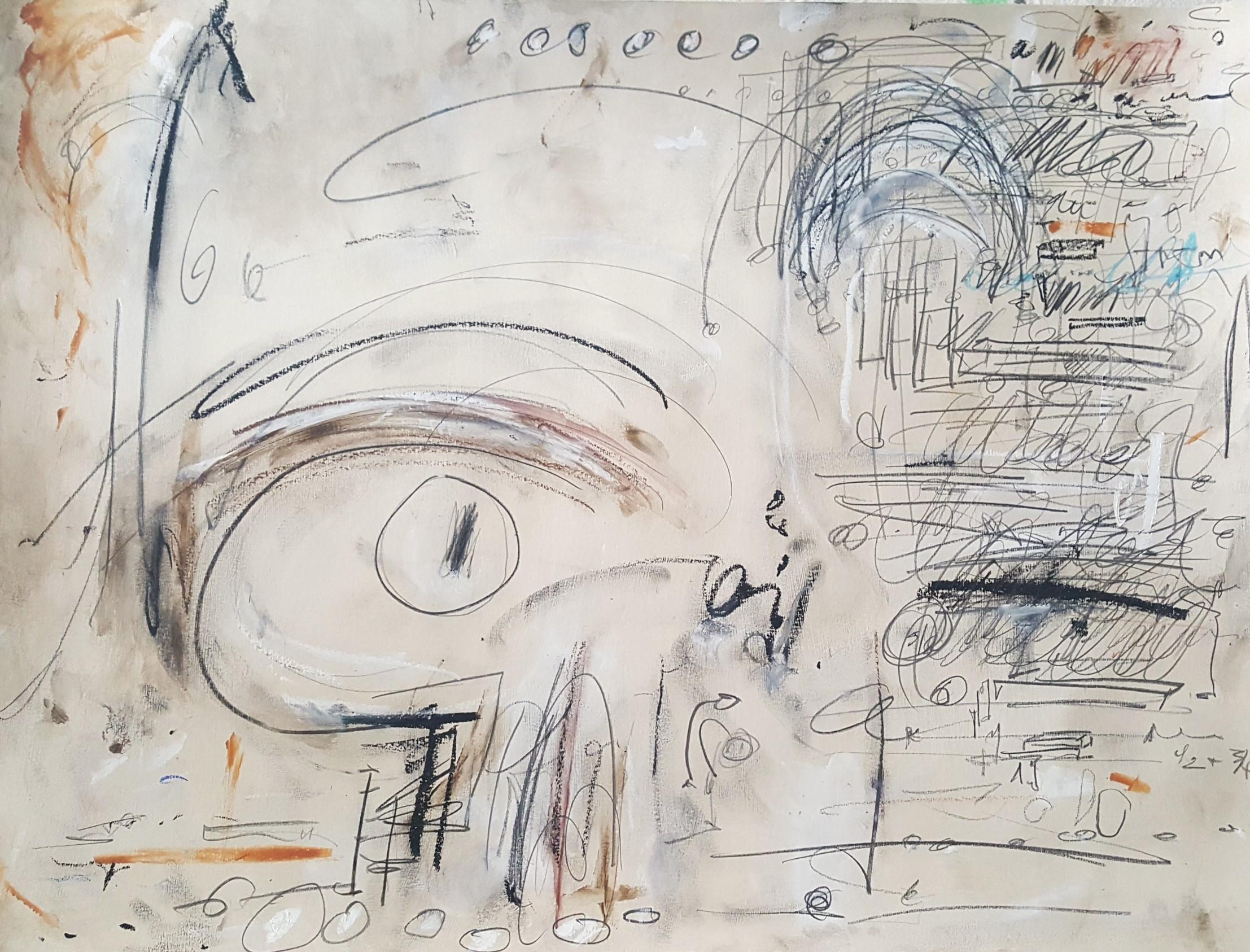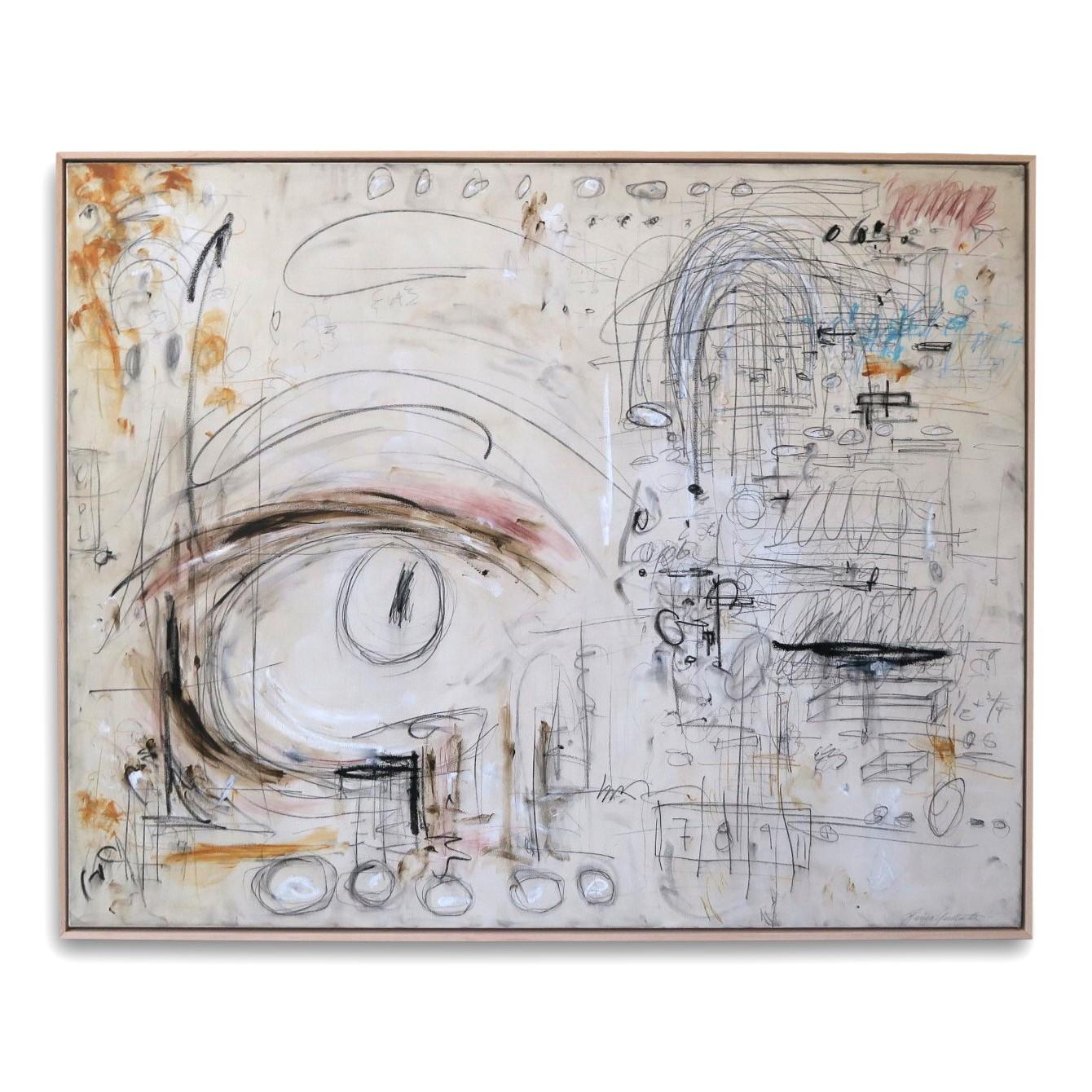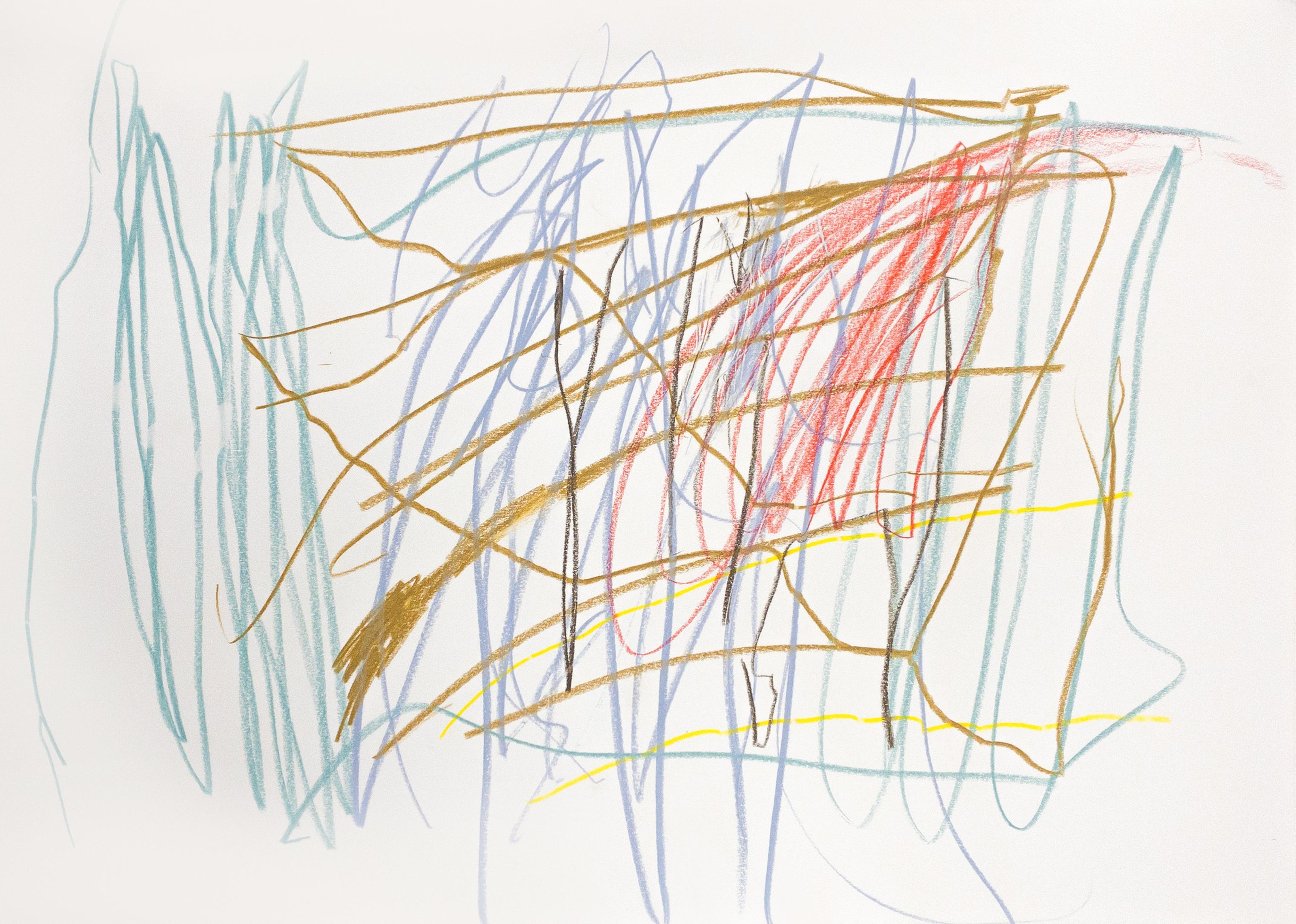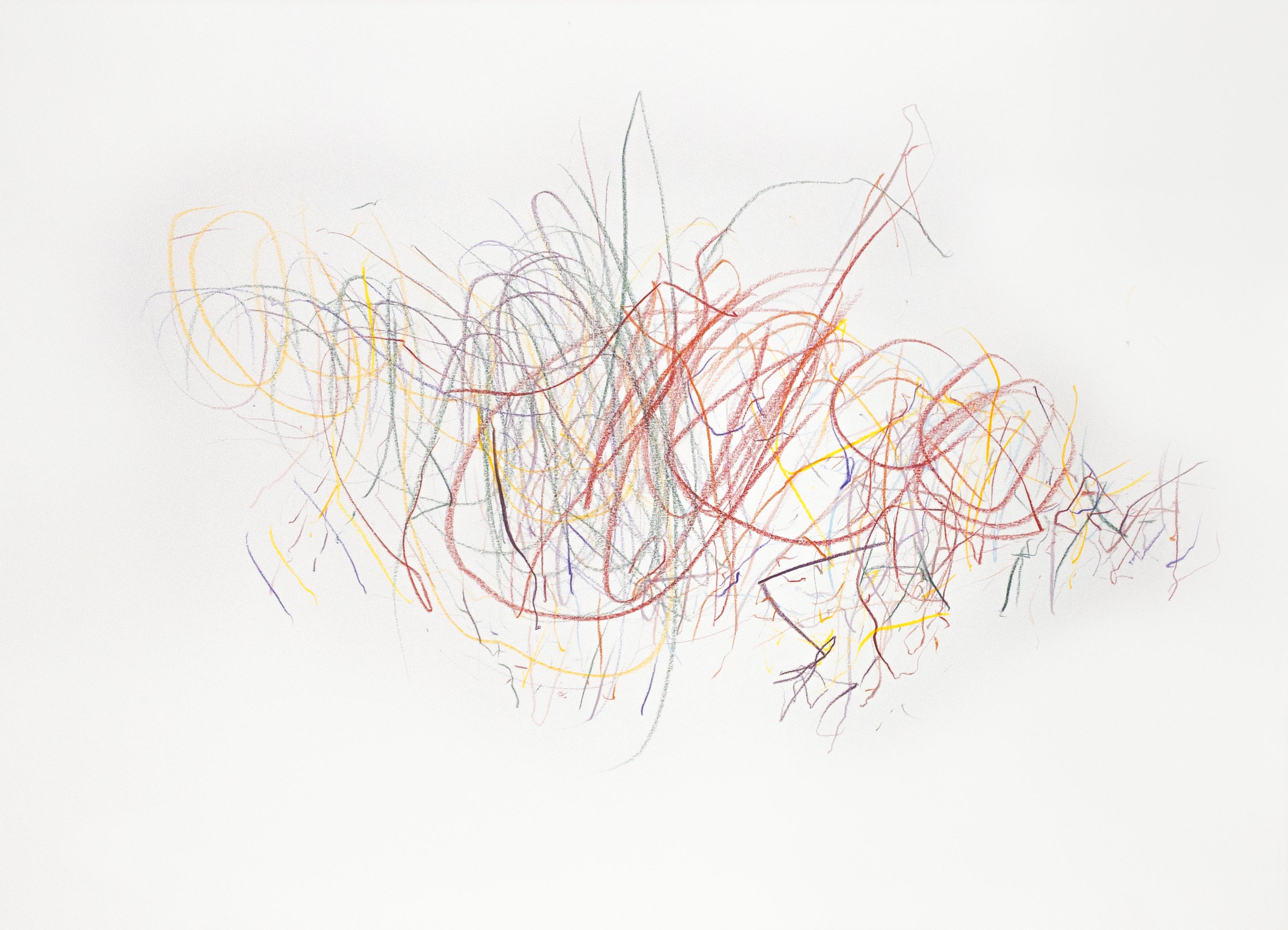Items Similar to Untitled
Want more images or videos?
Request additional images or videos from the seller
1 of 9
Leon KellyUntitled1930
1930
About the Item
Untitled
Graphite on paper, 1930
Signed and dated upper right (see photo)
Exhibited: Francis Nauman, Leon Kelly: Draftsman Extraordinaire, New York, April 4 - May 23, 2014. (label)
Condition: Excellent
Sheet: 11 x 8 1/2";
Frame: 17 5/8 x 15 1/8"
Leon Kelly (From Wikipedia, the free encyclopedia)
Leon Kelly (October 21, 1901 – June 28, 1982) was an American artist born in Philadelphia, PA. He is most well known for his contributions to American Surrealism, but his work also encompassed styles such as Cubism, Social Realism, and Abstraction. Reclusive by nature, a character trait that became more exaggerated in the 1940s and later, Kelly's work reflects his determination not to be limited by the trends of his time. His large output of paintings is complemented by a prolific number of drawings that span his career of 50 years. Some of the collections where his work is represented are: The Metropolitan Museum in New York, The Whitney Museum of American Art, the Museum of Modern Art, the Philadelphia Museum of Art, and Boston Public Library.
Biography
Kelly was born in 1901 at home at 1533 Newkirk Street, Philadelphia, PA. He was the only child of Elizabeth (née Stevenson) and Pantaleon L. Kelly. The family resided in Philadelphia where Pantaleon and two of his cousins owned Kelly Brothers, a successful tailoring business. The prosperity of the firm enabled his father to purchase a 144-acre farm in Bucks County PA in 1902, which he named "Rural Retreat" It was here that Pantaleon took Leon to spend every weekend away from the pressures of business and from the disappointments in his failing marriage. Idyllic and peaceful memories of the farm stayed with Leon and embued his work with a love of nature that emerged later in the Lunar Series, in Return and Departure, and in the insect imagery of his Surrealist work. "If anything," he once said,"I am a Pantheist and see a spirit in everything, the grass, the rocks, everything."
At thirteen, Leon left school and began private painting lessons with Albert Jean Adolphe, a teacher at the School of Industrial Art (now the University of the Arts) in Philadelphia. He learned technique by copying the works of the old masters and visiting the Philadelphia Zoo, where he would draw animals. Drawings done in 1916 and 1917 of elephants, snakes and antelope, as well as copies of old master paintings by Holbein and Michelangelo, heralded an impressive emerging talent. In 1917, he studied sculpture with Alexander Portnoff but his studies came to an abrupt halt with the start of World War I. Being too young to enlist, he joined the Quartermaster Corp at the Army Depot in Philadelphia, where he served for more than a year loading ships with supplies and, along with other artists, working on drawings for camouflage.
By 1920, the family's fortunes drastically changed. His father's business had failed due to the introduction of ready made clothing and his marriage, unhappy from the beginning, dissolved. Broken by circumstance Pantaleon left Philadelphia to begin a wandering existence looking for work leaving Leon to support his mother and grandmother. He found a job in 1920 at the Freihofer Baking Company where he worked nights for the next four years. Under these circumstances Leon continued to develop his skills in drawing and painting and learned of the revolutionary developments in art that were taking place in Paris.
During the day he was granted permission to study anatomy at the Philadelphia School of Osteopathy where he dissected a cadaver and perfected his knowledge of the human figure. He also met and studied etching with Earl Horter, a well known illustrator, who had amassed a significant collection of modern art which included work by Brancusi, Matisse, and Cubist works by Picasso and Braque. Among the artists around Horter was Arthur Carles, a charismatic and controversial painter who taught at the Pennsylvania Academy of Fine Arts. Leon enrolled in the Academy in 1922, becoming what Carles described as, "his best student".
In the next three years Leon work ranged from academic studies of plaster casts, to pointillism, to landscapes of Fairmount Park in Philadelphia, as well as a series of pastels showing influences from Matisse to Picasso. Clearly influenced by Earl Horter's collection and Arthur Carles he mastered analytical cubism in works such as The Three Pears, 1923 and 1925 experimented with Purism in Moon Behind the Italian House. In 1925 Kelly was awarded a Cresson Scholarship and on June 14 he left for Europe.
Paris
The first trip to Europe lasted for approximately three and a half months and introduced Kelly to a culture and place where he felt he belonged. Though he returned to the Academy in the Fall, he left for Europe again a few months later to begin a four-year stay in Paris. He moved into an apartment at 19 rue Daguerre in Paris and began an existence intellectually rich but in creature comforts, very poor. "I kept a cinderblock over the drain in the kitchen sink to keep the rats out of the apartment" he once explained. He frequented the cafes making acquaintances with Henry Miller, James Joyce and the critic Félix Fénéon as well as others. His days were split between copying old master paintings in the Louvre and pursuing modernist ideas that were swirling through the work of all the artists around him. The Lake, 1926 and Interior of the Studio, 1927, now in the Newark Museum.
Patrons during this time were the police official Leon Zamaran, a collector of Courbets, Lautrecs and others, who began collecting Kelly's work. Another was Alfred Barnes of the Barnes Collection in Philadelphia.
In 1929 Kelly married a young French woman, Henriette D'Erfurth. She appears frequently in paintings and drawings done between 1928 and the early 1930s.
Philadelphia
The stock market crash of 1929 made it impossible to continue living in Paris and Kelly and Henriette returned to Philadelphia in 1930. He rented a studio on Thompson Street and began working and participating in shows in the city's galleries. Work from 1930 to 1940 showed continuing influences and experimentation with the themes and techniques acquired in Paris as well as a brief foray into Social Realism. The Little Gallery of Contemporary Art purchased the Absinthe Drinker in 1931 and in 1932 exhibited Judgement of Paris, 1932, an ambitious painting with a classical theme. In October 1934, "Interior of a Slaughter House" and several other works were included in "Second Regional Exhibition of Painting and Prints by Philadelphia Artists" at the Whitney Museum in New York.
Kelly joined the Philadelphia Public Works of Art Project and worked on sketches for a mural destined for the School Administration Building. While some sketches survived, one is in the Metropolitan, the mural is lost. The harsh financial conditions of Kelly's life continued and by the late 1930s, Henriette, who spoke no English and whose only companionship outside the home was Helen Lloyd Horter (who spoke French), returned to France permanently When his divorce was finalized, Kelly began seeing Helen Lloyd Horter, a Philadelphia painter and a fellow student at the Academy and who was now the ex-wife of Earl Horter. In 1941 they married.
Kelly continued to work in his studio on Brandywine Street in Philadelphia teaching small classes to gain some income. Kelly's study of the masters in the Louvre collection resulted in great admiration for the Renaissance painter Leonardo Da Vinci. His influence is evident in Kelly's notebooks of this time which are full of drawings for World War II battlements and weaponry which echo DaVinci's drawings for the mechanisms of war. He also shared Leonardo's fascination with science and the underlying dynamics of how things work. His interest of the nervous system and sensory aspects of human anatomy would later come important components of his abstract figures of the 1950s and '60s.
- Creator:Leon Kelly (1901-1982, American)
- Creation Year:1930
- Dimensions:Height: 17.63 in (44.79 cm)Width: 15.13 in (38.44 cm)
- Medium:
- Movement & Style:
- Period:
- Condition:Framed with OP-3 Acrylic.
- Gallery Location:Fairlawn, OH
- Reference Number:
About the Seller
5.0
Recognized Seller
These prestigious sellers are industry leaders and represent the highest echelon for item quality and design.
Platinum Seller
These expertly vetted sellers are 1stDibs' most experienced sellers and are rated highest by our customers.
Established in 1978
1stDibs seller since 2013
711 sales on 1stDibs
Typical response time: 1 hour
Associations
International Fine Print Dealers Association
- ShippingRetrieving quote...Ships From: Fairlawn, OH
- Return PolicyA return for this item may be initiated within 10 days of delivery.
More From This SellerView All
- untitledBy Virginia DehnLocated in Fairlawn, OHUnsigned Authenticated verso by the artist's nephew, Andrew Lowe Provenance: Estate of the ArtistCategory
Mid-20th Century Abstract Expressionist Abstract Drawings and Watercolors
MaterialsPastel
- Untitled (Abstraction)By Rolph ScarlettLocated in Fairlawn, OHUntitled (Abstraction) Ink on textured paper, c. 1958 Signed lower right: Scarlett Note: A rare mid to late 1950s example of the artist's abstract expressionist style. Provenance: Es...Category
1950s Abstract Expressionist Abstract Drawings and Watercolors
MaterialsInk
- Untitled AbstractionBy John von WichtLocated in Fairlawn, OHUntitled Abstrraction Gouache, watercolor and pigments on paper, c. 1960 Signed lower right in pencil (see photo) Image: 17 x 22 inches Sheet: 25 1/4 x 29 3/4 inches Frame: 25 1/4 x ...Category
1960s Abstract Expressionist Abstract Drawings and Watercolors
MaterialsWatercolor
- UntitledBy Peter MarksLocated in Fairlawn, OHUntitled (Circles) Graphite on wove paper, 2007 Unsigned Provenance: Estate of the Artist Condition: Excellent Sheet/Image size: 16 15/16 x 14 inches Peter Marks (1935 -2010) Pete...Category
Early 2000s Abstract Abstract Drawings and Watercolors
MaterialsGraphite
- Non-Objective Drawing (Double sided composition)By Rudolf BauerLocated in Fairlawn, OHNon-Objective Drawing (Double sided composition) Graphite on paper, 1938 Initialed "B" by the artist lower right corner Created while the artist was imprisoned in a Gestapo Prison for his "Degenerate Art" Image size: 7 x 6 3/4 inches Housed in raw silk matting in a reproduction Gugenheim style frame with OP3 Acrylic Frame dimensions: 16 x 17 x 1 1/2 inches Condition: Folded in quarters by the artist to hide the drawing from the Gestapo Irregular margins Provenance: Estate of the artist Phillips Auction, New York Borghi Inc. "Back in Berlin, Das Geistreich had become a lonely island of individualism in a menacing sea of Nazism. The Bauhaus had been closed down by the government in 1933, and artists such as Bauer were increasingly ostracized. Many had already fled the country. Rebay wrote Bauer in August 1937 to report that she had visited the Degenerate Art exhibition in Munich, which featured many artists from their Der Sturm days, including works by Kandinsky, Klee, Moholy-Nagy, and, of course, Bauer. Why Bauer lingered so long in this hostile environment remains a mystery. He was not Jewish, yet his patron was one of the richest Jews in the world. This association would not go unnoticed in Nazi Germany. In July 1937 Bauer traveled to Paris because his work was included in an exhibition called Origines et développement de l'art international indépendant, organized by the Musée du Jeu de Paume. In this large survey of the period, his painting was shown alongside the work of Picasso, Georges Braque, Léger, Chagall, and Joan Miró. It is believed that while he was in Paris he received word from friends that it was too dangerous to return to Berlin; yet he ignored the warning. According to the Rebay documentarian Sigrid Faltin, it is likely that his sister, a Nazi zealot who had disowned him, turned him in to the authorities for his art. Bauer was suddenly a prisoner in Berlin. Defiant, he scavenged scraps of paper and pencils while in prison, so that he could continue to draw." Courtesy Weinstein Gallery...Category
1930s Abstract Abstract Drawings and Watercolors
MaterialsGraphite
- Untitled AbstractionBy Medard P. KleinLocated in Fairlawn, OHUntitled Abstraction Graphite on paper, c. 1950 Unsigned Signed with the estate stamp verso (see photo) Provenance: Estate of the artist Inherited by his neighbor/caregiver Condition: Excellent Soft fold on top edge, not visible from front Image/Sheet size: 14 x 11 1/16 inches Medard Klein was born in Appleton Wisconsin on January 6th, 1905. At the age of 21, Klein left his rural hometown and moved to Chicago where he began studying art. During the late 1920’s Klein...Category
1950s Abstract Abstract Drawings and Watercolors
MaterialsGraphite
You May Also Like
- "Eye of the Beholder" Acrylics, Pencils, Oil Pastels in Neutral Hues of TaupeBy Karina GentinettaLocated in New York, NY"Eye of the Beholder" 2024, 48"x60" horizontal abstract painting by Argentine-born artist Karina Gentinetta (featured in Elle Decor, Architectural Digest, the New York Times, Traditi...Category
21st Century and Contemporary Abstract Expressionist Abstract Drawings a...
MaterialsOil Pastel, Acrylic, Carbon Pencil, Color Pencil
- "Untitled" Acrylics, Pencils, Oil Pastels on Paper in Neutral Hues of TaupeBy Karina GentinettaLocated in New York, NY"Untitled" 2019, 25" x 31" horizontal drawing on paper by Argentine-born artist Karina Gentinetta (featured in Elle Decor, the New York Times, Tradi...Category
21st Century and Contemporary Abstract Expressionist Abstract Drawings a...
MaterialsGlaze, Oil Pastel, Acrylic, Carbon Pencil
- Untitled #8 by Oleg Ustinov - Abstract drawing, color pencils on paper, 2021Located in Basel, BSThe series of pencil drawings by contemporary artist Oleg Ustinov can can be described as "acid abstraction" — a reassembled skeleton of abstract painting, the method of creating whi...Category
2010s Abstract Expressionist Abstract Drawings and Watercolors
MaterialsPaper, Color Pencil
- Untitled #2 by Oleg Ustinov - Abstract drawing, color pencils on paper, 2021Located in Basel, BSThe series of pencil drawings by contemporary artist Oleg Ustinov can can be described as "acid abstraction" — a reassembled skeleton of abstract painting, the method of creating whi...Category
2010s Abstract Expressionist Abstract Drawings and Watercolors
MaterialsPaper, Color Pencil
- XYLOCOLLISION #5 by Oleg Ustinov - Abstract drawing, color pencils, 2021Located in Basel, BSXylocollision is a series of graphics made by contemporary artist Oleg Ustinov in 2021. Works are drawn with both hands and several pencils at the same time. Pencils here resemble l...Category
2010s Abstract Expressionist Abstract Drawings and Watercolors
MaterialsPaper, Color Pencil
- XYLOCOLLISION #19 by Oleg Ustinov - Abstract drawing, color pencils, 2021Located in Basel, BSXylocollision is a series of graphics made by contemporary artist Oleg Ustinov in 2021. Works are drawn with both hands and several pencils at the same time. Pencils here resemble l...Category
2010s Abstract Expressionist Abstract Drawings and Watercolors
MaterialsPaper, Color Pencil
Recently Viewed
View AllMore Ways To Browse
Italian Renaissance Very Large Painting
French Pointillism
French Drain
19th Nineteenth Century Landscape
Jerusalem Wood
Old Wild West Gun
Man Under Water Art
16 X 20 Sea Art
Oil Painting Of Little Girl
New York City And Times Square Painting
Belgium Coast
Child Sculptor Wood
Canal Post
Degenerate Nazi
Hermes Had
Modigliani Original
Naive Style Landscapes
Les Enfants





